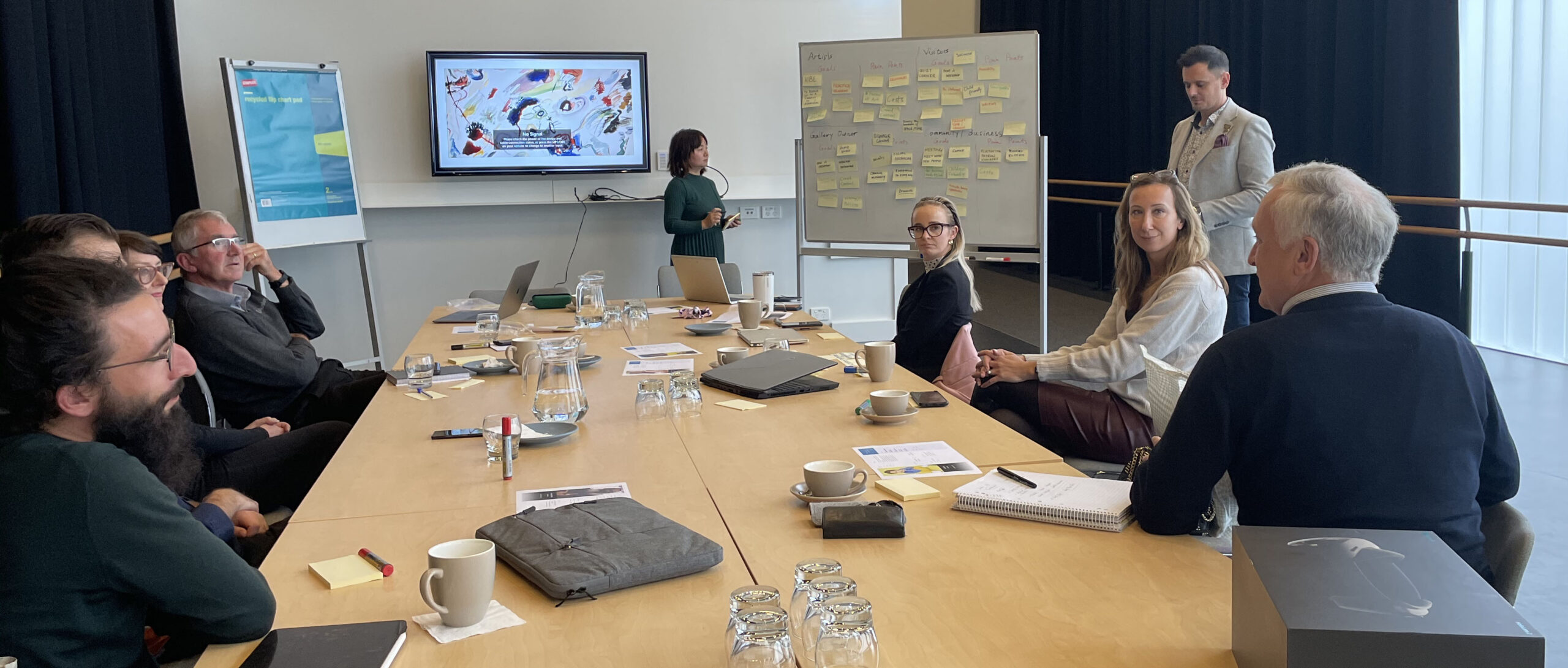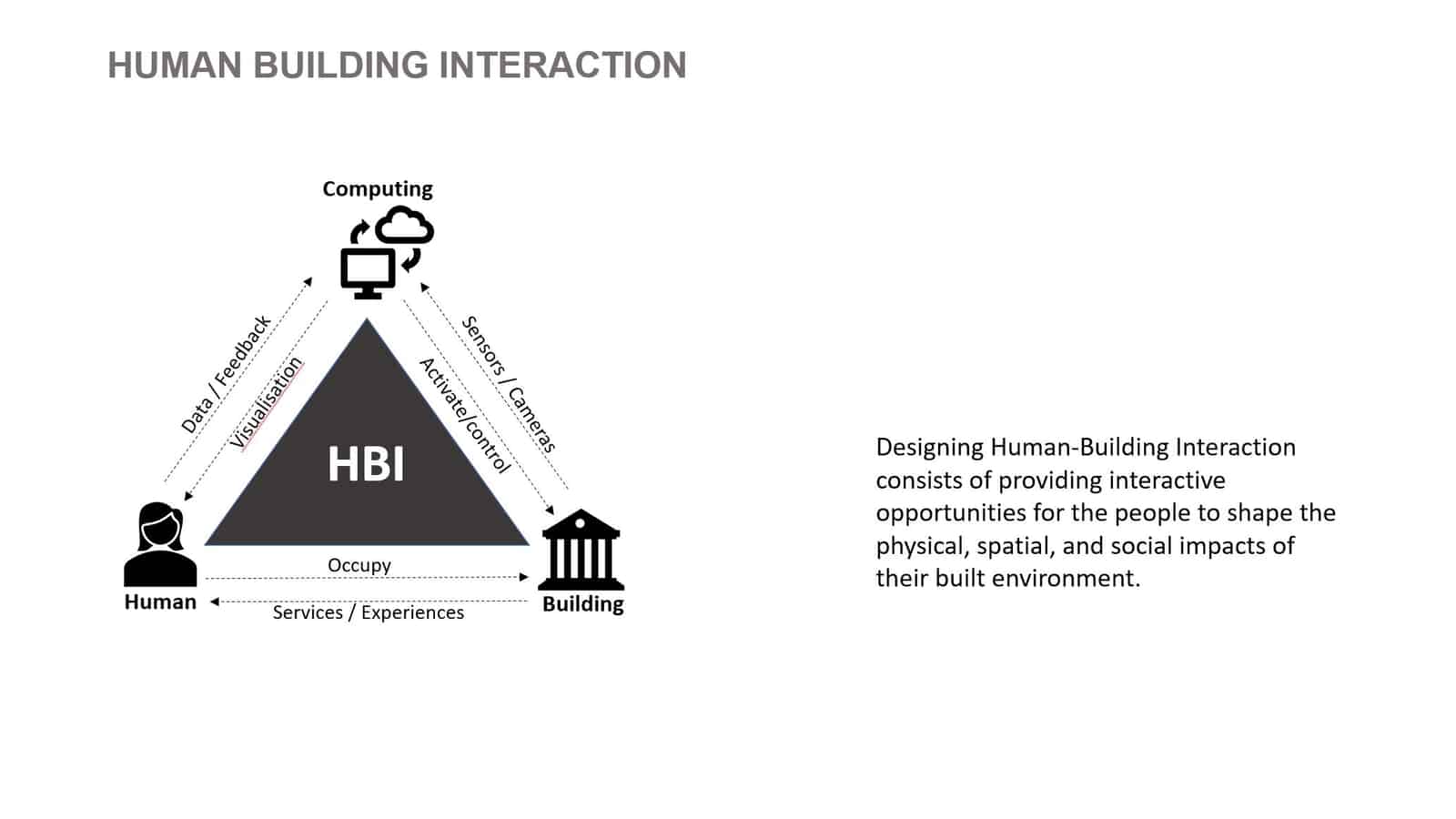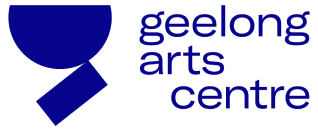
This project defines and interprets a spatially “intelligent building” by looking through two different lenses: first, opportunities to improve building operations; and second, opportunities to create new social, spatial, and experiential Human-Building-Interactions. We have used these two lenses to analyse interviews we undertook with Arts Centre staff and management. This analysis gave us an understanding of current problems with day-to-day building operations and in user interactions with the building and its interior spaces. Our analysis identified several operational and interaction issues that we have grouped into four primary themes. Each theme is defined as an objective and supported by a summary of the key issues identified:
RE-UTILISATION AND ACTIVATION OF OPEN BUILDING SPACES:
- Open lobby/foyer spaces underutilised/not used well
- Cold and unwelcoming spaces
- Not enough furniture
- No café or intimate gathering areas
- No additional activities provided
EASIER INFORMATION MOVEMENT AND BETTER INFORMATION DISTRIBUTION THROUGHOUT THE BUILDING’S INTERIOR SPACES:
- Lack of appropriate physical/digital wayfinding signage
- Managing information screens is laborious for staff
- No alternative ways to distribute additional information
- Need for additional staff due to wayfinding issues
EASIER USER MOVEMENT THROUGH, AND BETTER USER DISTRIBUTION THROUGHOUT, THE BUILDING’S INTERIOR SPACES:
- Lack of visibility due to vertical distribution of the content
- Problems with physical movement of people
- Only one lift with limited occupancy
- Only one (fire escape) staircase
- Long queues
- No storage spaces
- Lack of employee gathering spaces
ENHANCED INTERACTION AND INFORMATION INTERCHANGE BETWEEN BUILDING AND USERS (MOVING BODIES):
- No tools in place to capture and measure user movement/behaviours
- No tools in place to capture and measure user satisfaction/expectations
- No internal mechanism to measure and interpret user feedback
The interviews helped us understand that all building users, including the Arts Centre’s staff and management, experienced difficulties with physical movement and the comfortable utilisation of space. We also noted that there were problems with the distribution of information that could assist visitors with their everyday usage of the building’s interior spaces. In response, we explored how some of these issues could be solved through the creation of new experiential human-building interactions (shown in the diagram below).

